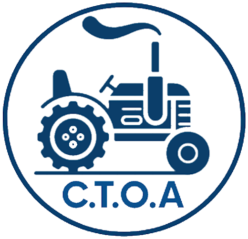Forum Replies Created
-
AuthorPosts
-
Tin,
Do you perhaps have a toothbar on your loader? If you have a toothbar and buy/build the forks to go on with the toothbar, it will spread out the pressure on the bucket.
RonJ
ronjin
Len,
Here is the technique that I used to check the possible leakage on my FEL cylinders.
1. Raise the bucket about 3 feet off the ground with the bucket level with the ground.
2. Block up the bucket to hold it in that position. I used a combination of a 4×4 and a floor jack.
3. Turn off the tractor and wiggle the FEL controls to release any pressure in the lines.
4. Remove and insert plugs into all of the hoses that feed the FEL cylinders.
5. Remove the blocking from under the bucket.
6. Use a ruler to measure height from the ground to both the back and front of the bucket.
7. Leave it that way and periodically remeasure both the front and the back height of the bucket also record the times.
This takes the FEL control valve out of the picture and should give you some data points to determine whether there is leakage in the cylinders, how much and whether it is both tilt and/or lift cylinders.
RonJ
ronjin
Len,
When you hold it in the H position, what does the ammeter gauge read?
I'm not in a really cold climate, but in case it helps-here is my starting technique.
1. Move hand throttle control so accelerator is slightly depressed.
2. Turn decompression lever clockwise till it stops.
3. Turn key to start position and watch oil pressure gauge till pressure peaks. This allows the engine to circulate oil without the starter fighting compression. Release key.
4. Turn key to H position (ammeter should drop way into the negative) and hold in that position for 25 seconds.
5. Immediately (so glow-plugs don't cool) turn key to start position.
6. If tractor does not start in ~5 seconds, repeat from step 4.
At step 5 if it is really cold, I engage the decompression lever, turn the key to start and release the decompression lever when the oil pressure peaks.
RonJ
ronjin
Bob,I used to use an electric 12″ Remington for limbing standing trees and cutting downed branches to firebox length. A couple of years ago I had some guys up here to take down some trees near the house. They required topping before they could take down the main trunk.
I was intrigued with the small gas saws that they used. The told me that they were called Toppers. I went out and got an Echo CS-3000 and have been happy with it. The saw is light and made for hauling up on a line when up in the tree. Usually takes 2-3 pulls to start it when I haven’t used it for several weeks. Once it is warmed up, it never takes more than 1 pull. I used it a couple of months ago at the top of a 17’ ladder cutting off some cedar branches that needed to be removed.
Take a look at Toppers. Stihl also makes them, but I found the Echo on Craigs List so saved some money.
RonJ
ronjin
-
AuthorPosts
